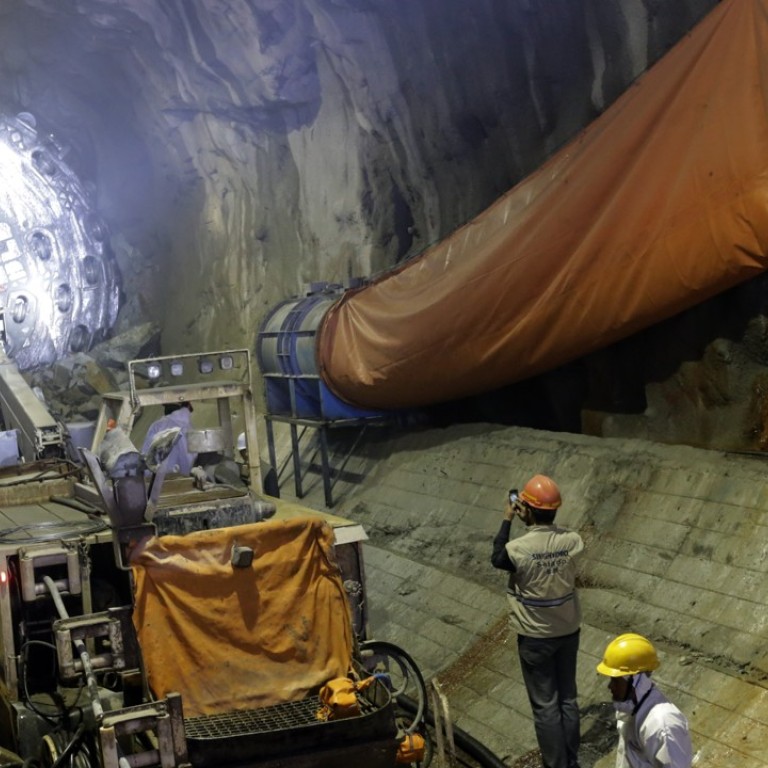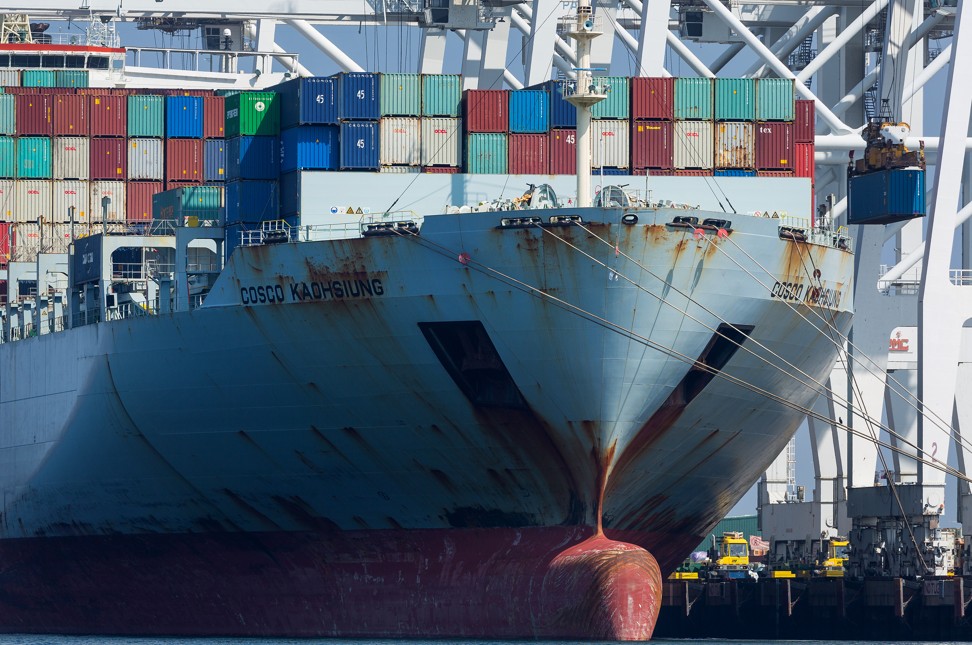
US President Donald Trump targets Chinese loans to poor countries amid trade tensions
Beijing’s secretive lending practices in developing nations are drawing increased objections from Washington, the World Bank and IMF
China has showered US$10 billion on debt-laden Ecuador over the past six years for energy and infrastructure projects – part of a global effort by Beijing to finance development in poor countries that are rich with natural resources.
Yet the terms on billions of dollars in Chinese financing across Africa, Asia and Latin America remain mostly secret. In Ecuador, for example, not even the oil minister knows what strings are attached to his country’s loans.
China’s secretive lending practices in developing nations are drawing increased objections from the United States, World Bank and International Monetary Fund that want Beijing to reveal more about its loans. They also want recipients to be more transparent about their own financial position, including debt levels.
The pressure on China for added transparency comes as the Trump administration is squaring off with Beijing over what the US calls unfair trade practices. President Donald Trump has threatened to impose tariffs on as much as US$150 billion worth of Chinese imports while also cracking down on the country’s investments in American businesses. The two sides called a truce on Saturday.
“If you ask China for its terms you will not find them,” David Malpass, the US Treasury undersecretary for international affairs, said in a speech earlier this year, referring to loans made to Venezuela that were denominated in barrels of oil.
The opaque lending “undercuts the incentives of recipient governments to improve their business environments, governance structures”, Malpass said, and the deals “often consist of long-term contracts for commodity exports at prices favourable for China, not the exporting country”.
At IMF meetings last month and a G20 conference in March, US Treasury Secretary Steven Mnuchin raised concerns about the risk of countries defaulting on their Chinese loans. He, the IMF and the World Bank have asked China to join the Paris Club, a group of creditors that specialises in loans to governments and requires both its members and their debtors to adhere to transparency standards.
China has resisted, in part over concerns that other members would have a say in bilateral debt restructuring negotiations that could affect Beijing’s interests.
The foreign ministry on Monday said its economic cooperation with other countries “is always above board and has no strings attached”, adding that it follows the principles of “equality, openness, mutual respect, transparency and win-win outcomes”.
“We always abide by market laws and international rules. We always pay great attention to debt sustainability,” foreign ministry spokesman Lu Kang told reporters on Monday.
“We hope relevant countries can view this in an objective way, and invest their time and energy in making contributions to other countries’ development instead of making irresponsible remarks on other countries’ efforts.”
The IMF released a policy paper in March examining public debt levels in low-income developing countries, a document interpreted as a criticism of China’s lending practices though it scarcely mentioned the country. A May 8 statement from the fund highlighted “debt distress” in 15 African nations, but without naming China as the culprit.
The Trump administration is also targeting China’s relationship with the World Bank, where the country remains a recipient of development money. The US argues that the world’s second-largest economy no longer needs help from donor nations and is urging the bank to review the arrangement and wean China off its programmes more quickly.
The World Bank loaned China US$2.47 billion last year, the most since 1998. In a deal this year with the Trump administration to increase its capital by US$13 billion, the bank agreed to review its “graduation” policy, according to a bank official.
The US campaign reflects concern in Washington that China’s expanding role in the developing world will undermine American influence, a fear that dates back to the George W. Bush administration. The Trump administration’s National Defence Strategy released in January accused China of trying to gain “veto authority” over other nations’ economic decisions, and cited state-investment and loans as a way Beijing was pulling Latin America “into its orbit”.
The dispute over China’s development loans is just one front in that broader economic conflict with the US, the subject of talks in Washington between Chinese Vice-Premier Liu He and top Trump administration officials in recent days.
Beijing has vowed to retaliate for any tariffs by imposing its own duties against US exports.
But there is an important difference between the two countries’ aid. While 93 per cent of US financial support during the period came in the form of direct aid or loans made on concessionary terms, less than a quarter of Chinese help did, AidData said.
“These loans are a problem,” said Edwin Truman, a researcher at the Peterson Institute for International Economics in Washington and a former US Treasury official.
“If a country gets in trouble, or is in arrears, China or the recipient country may not alert the IMF. And then they find themselves seeking debt relief from the IMF.”
Russia has accepted more in Chinese development funding than any other country. Elsewhere, Chinese money is behind a four-lane highway in Sri Lanka, bridges in Angola, motorways in Pakistan and a railway company in Venezuela.
Beijing often demands public-sector assets as collateral. It does not always offer information on its loans’ structure, or when a debt is in arrears, according to an IMF official. Many recipient nations also do not provide data on their debt and economic indicators. That means ratings agencies, international lending institutions and banks may miss red flags before a country needs a bailout, the official said, speaking on the condition of anonymity.
In Ecuador’s case, the debt-laden country – with just a US$98 billion economy – was desperate for cash, having surpassed its legal borrowing limit of 40 per cent of gross domestic product in 2016. Even though China’s loan to the country may eventually be repaid with oil exports, oil minister Carlos Perez does not know the precise terms of the arrangement, showing the opacity of the Chinese debt.
Ecuador released new data on Thursday showing that it owes China US$7.3 billion, though the terms remain unclear.
“This is an area where there isn’t an overall authority and the best one can hope for is naming and shaming of the Chinese authorities until they become more transparent,” Truman said.
In Myanmar, China has agreed to build a US$10 billion port in a remote town of 50,000 people on the Bay of Bengal.
The offer includes the participation of a Chinese state-owned investment corporation, which has proposed taking a 70 per cent stake in the project. The Myanmar government and central bank are nevertheless worried that its US$75 billion economy, one of the smallest in Southeast Asia, will struggle to repay its share of the debt.
Chinese infrastructure loans could be a boon to the developing world, Malpass said. But that depends on whether “the terms are fair and projects are market-oriented”.


